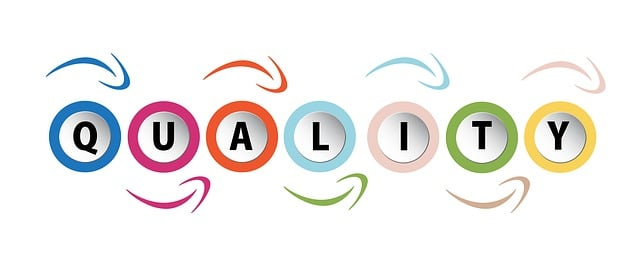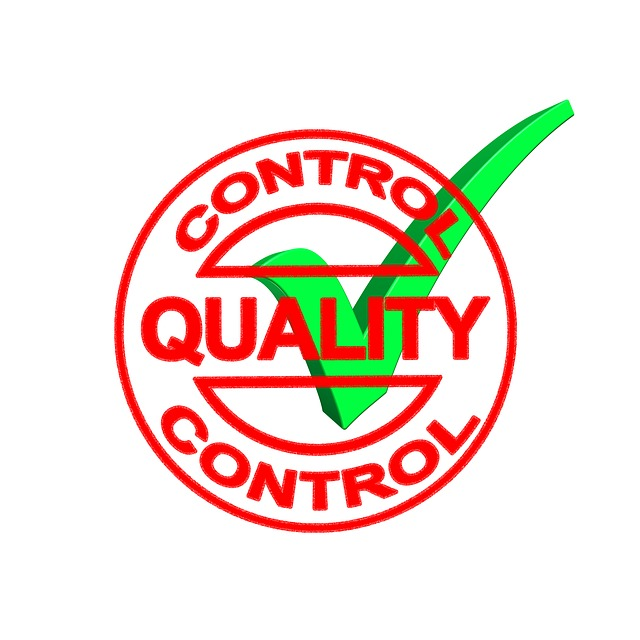As industries continue to evolve and become more competitive, the need for efficient quality inspection processes becomes paramount. Quality inspection software provides a comprehensive solution to streamline inspection procedures, save time, improve accuracy, and enhance overall quality management and manufacturing process. In this ‘Quality Inspection Software’ article, we will explore its key features, discuss tips for choosing the right software, and provide insights on implementing it successfully.

Understanding the Basics of Quality Inspection Software
Definition and Function of Quality Inspection Software
Quality inspection software refers to a digital tool designed to facilitate and automate various inspection processes within an organization. It allows businesses to comply with industry standards, identify defects, collect and analyse data, and generate accurate inspection reports together.

By utilizing this software and inspection forms, companies can ensure the consistency, accuracy, and reliability of their products and services.
Quality inspection software provides a comprehensive solution for managing the entire inspection process. It offers features such as customizable inspection checklists, real-time data capture, and automated workflows and tasks for inspectors.
With this software, organizations can streamline their inspection procedures, eliminate manual errors, and improve overall efficiency.

One of the key functions of quality inspection software is to enable businesses to comply with various quality control standards and regulations. It provides a centralized platform where companies can define and enforce their quality control processes.
The software helps in doing quality checks and standardizing inspection procedures, ensuring that every product or service meets the required specifications.
Furthermore, quality inspection software allows organizations to identify defects and non-conformities and defective products early on. It provides tools for capturing and documenting inspection results, including images, measurements, and observations. This data can be analysed to identify trends, patterns, and areas for corrective action and improvement.
Importance of Quality Inspection Software in Industries

In today’s competitive landscape, ensuring the highest level of product quality is crucial for businesses to maintain their reputation and customer satisfaction. Quality inspection equipment and software plays a vital role in achieving this goal by enabling organizations to detect and prevent defects, address issues early on, reduce rework, minimize waste, and optimize production processes.
By using quality inspection and reporting software, companies can proactively identify and resolve quality issues before they impact the end-user. This helps in improving customer satisfaction and loyalty, as customers receive high quality products and services that meet their expectations consistently.
Regulatory Standards & Industry Regulations
Moreover, quality inspection automation software helps businesses in complying with regulatory standards and industry regulations. It provides a framework for documenting and maintaining compliance records, ensuring that organizations meet the necessary requirements. This not only helps in avoiding penalties and legal issues but also enhances the reputation, safety and credibility of the company.
Inspection Data Analytics
Another significant advantage of quality inspection software is that it enables organizations to collect and analyse data related to quality. The software allows for the systematic capture of inspection results, which can be used to generate reports and perform statistical analysis. This data-driven approach to quality inspections helps in identifying the inspection trends, root causes of defects, and areas for improvement.
Accountability
Furthermore, quality inspection so promotes transparency and accountability within an organization. It provides visibility into the inspection process, with inspection reports and allowing relevant stakeholders to track the progress and status of inspections. This fosters a culture of continuous improvement, as issues can be addressed promptly, and corrective actions can be implemented.
Streamline Processes (and more)

In conclusion, quality inspection software is a valuable tool for businesses across industries. It streamlines inspection processes, ensures compliance with standards and regulations, improves product quality, and enhances brand image and customer satisfaction. By leveraging this an inspection software solution, organizations can achieve operational excellence and gain a competitive edge in the market.
Key Features of Quality Inspection Software
Compliance and Regulatory Standards Management
Compliance with industry regulations and standards is essential for businesses to maintain their credibility and operate legally. Quality inspection software helps organizations adhere to these requirements by providing built-in compliance tools. These tools ensure that inspections are conducted in accordance with specific standards, enabling companies to demonstrate regulatory compliance during audits and inspections.
Additionally, the software helps manage documentation, such as test records visual inspections, certificates, and audit trails, simplifying the team’s productivity and overall compliance management process.
Integration Capabilities with Other Systems
To maximize efficiency and effectiveness, quality and inspection data and software often offers integration capabilities with other systems used within an organization. This enables seamless data exchange between different departments and eliminates duplicate data entry. For example, the software can integrate with manufacturing execution systems (MES) to retrieve data on production processes and track defects.
Integration with customer relationship management (CRM) systems allows companies to proactively address customer concerns and feedback, enhancing overall customer satisfaction.
Choosing the Right Quality Inspection Software
Identifying Your Business Needs
Before selecting a quality inspection software, it is crucial to assess your organization’s unique needs and requirements. Consider factors such as the type of inspection criteria amount of inspections, volume of inspections, industry regulations, and specific functionalities you need. Engage with stakeholders, including inspectors, quality managers, and IT personnel, to gather insights into their pain points and expectations. This will help you identify the software that aligns best with your business objectives.
Evaluating Software Providers
When evaluating software providers, ensure you consider their reputation, experience, customer reviews, and industry partnerships. Look for a provider that has a proven track record in delivering quality inspection software. Check for certifications or standards they adhere to, like ISO 9001, which is an internationally recognized quality management standard.
Additionally, request product demos to assess whether the software meets your specific requirements and ensure compliance it provides a user-friendly interface.
Considering Software Scalability and Customization

As your business grows, your quality inspection and data analytics needs are likely to evolve as well. It is important to choose a software solution that can scale in line with your organization’s requirements. Consider the software’s flexibility, ability to handle increased data volumes, and its capacity to accommodate continuous improvements and future enhancements.
Additionally, evaluate the software’s customization capabilities, ensuring that it can be tailored to suit your unique workflows and processes.
Implementing Quality Inspection Software
Training and Support for Users

Once you have selected the appropriate software, it is essential to invest in comprehensive training and support for your users. Ensure that your employees have a clear understanding of the software’s functionalities, features, and workflows. Providing hands-on training sessions, user manuals, and access to an efficient support system will empower your quality teams to to fully utilize the software’s potential and overcome any challenges recurring issues they may encounter.
Ensuring Smooth Transition and Integration
Implementing new software can sometimes be disruptive to ongoing operations. To reduce risk and ensure a smooth transition, develop a detailed implementation plan that includes steps for data migration, system integration, and user acceptance testing. Communicate the benefits of the new software to your teams, addressing any concerns and providing ongoing support during the implementation phase.
By involving key stakeholders and adopting change management practices, you can minimize disruption and successfully integrate the software into your organization.
Measuring Success and ROI

It is essential to establish performance metrics and KPIs to measure the success and return on investment (ROI) of your quality inspection software. Monitor key parameters such as defect rates, inspection cycle times, and cost savings resulting from decreased rework or scrap. Regularly assess whether the software is delivering the intended benefits and adjust strategies accordingly.
By continuously evaluating the software’s impact on quality, drive continuous improvement, and overall operational efficiency, you can ensure that your investment in quality inspection software is generating valuable returns.
To Sum Up

Using quality inspection software ensures that the likelihood of quality inspectors making an error is reduced because you can standardise inspections. You can eliminate paper with a mobile app to make quality quality control easier, faster and more intuitive. Inspection data can be kept safe and secure in the cloud, and show that you meet quality standards.
Moreover, it offers numerous benefits for businesses aiming to enhance their quality management processes. By understanding the basics, exploring key features, choosing the right software, and implementing it effectively, organizations can improve efficiency, improve product quality, achieve regulatory compliance, and overall operational excellence. Embrace the power of mobile devices for your team and stay one step ahead in today’s competitive market.
Additional Reading
Now that you’ve explored how often should fire extinguishers be visually inspected why not check out the following posts:
More Helpful Content
Visit our Homepage
